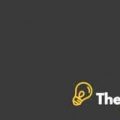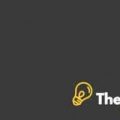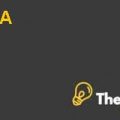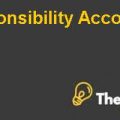
Introduction
Nestle SA is based in Switzerland and it mainly deals in food and beverages. On the basis of its revenues, it is considered to be largest company. The products of Nestle are breakfast cereals, coffee, confectionary, dairy products, ice-creams, pet foods and also snacks. It has almost an annual turnover of 1 billion Swiss francs. It also has 29 brands such as Nescafe, KitKat, Nesquik, Stouffers, Maggi and Vittel. It employs 380,000 employees and it is currently operating in 86 countries worldwide with around 450 factories. It came into existence in 1905 after the merger of Anglo-Swiss milk established by three brothers.
The company performed successfully after its arrival on the market and expanded itself on a wide area during 1st and 2nd World War. Nestle also made successful acquisitions which includes Crosse & BlackWell, Rowntree Macintosh. Nestle is also listed on the Swiss stock exchange, it is at 2nd position on Euronext. Nestle was also awarded with 1st position in Fortune Global 500 based on its high profitability (Nestle, n.d).
5 Years Analysis of Financial Statements
Balance Sheet
Current Assets
The current assets of Nestle are showing a declining trend, the reason can be that at first it has made high short term investments in 2010 (38997 SF) but in 2014 (33961 SF) the short term investments have decreased.
It may be also be due to the increase in inventory because by holding high level of inventory, it will result in high costs so if a company somehow is able to verify its existence and can keep quality check then it can take control of costs. It can also collaborate with the creditors by linking its system with the suppliers so that Nestle can better manage its inventory level in order to avoid unnecessary holdings. This will ultimately result in cost savings and Nestle will be able to make short term investments which seem to be a problem for it currently.
On the other hand, Nestlé’s trade receivables are also growing, but this increase cannot be considered as substantial. Hence, Nestle has to take into account the terms on which it is making sales to its consumers.
Non-Current Assets
The non-current assets of Nestle are showing an increasing trend in absolute terms. In 2010 non-current assets were 72664 SF but increased to 99489 SF (Financials, Consolidated Financial Statements of Nestle Group, 2010). It seems that Nestle is trying to invest its money mostly in major acquisitions in order to capture the benefits in future. It can also be linked with the short term investments that the company is incurring opportunity cots, but if it at present it forgoes the opportunity to earn higher amounts right now therefore, it can result in better prospects of Nestle (Financials, 2011).
Income tax and deferred-tax payments that the company has to make are also higher as compared to previous years therefore; it may have to take account of this factor also.
Current Liabilities
The current liabilities of Nestle are showing an increasing trend, it may be because of several factors however, if trade payables are taken into account, then it is increased from 12 592 CHF to 17 437 CHF.
Nestle is currently trying to pay its suppliers lately which is why it does not seem to be a good sign because the perception among creditors about Nestle will not result in their favor. Hence, in future they will not be able to negotiate better terms with the suppliers.
Non-current Liabilities
Nestlé’s non-current liabilities are also increasing. This may be due to the increase in their borrowings from the banks; they should try to reduce its reliance on high borrowings because if they are not going to earn sufficient profits, then it will also not be able to repay the amount of borrowings and interest payments. It can lead to a change in the terms that were agreed before between the bank and the company and the bank is not going lend money at lower interest rates this time.Financial analysis Nestle Group Case Solution
Equity
The share capital of Nestle is also showing a decreasing trend in absolute terms. It is not a good sign because it will ultimately affect the share price of Nestle and a falling share price will not reflect a good image among the prospective investors. On the other hand, the retained earnings of Nestle are showing an increasing trend, the increase is not very substantial in absolute terms but even then the company is able to manage its retained earnings properly.......................
This is just a sample partial case solution. Please place the order on the website to order your own originally done case solution.












